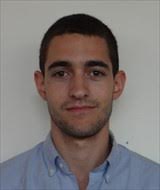How LA’s Orthodox Jews averted the worst of the pandemic

Young Israel of Century City in the Pico-Robertson neighborhood Image by Credit: Jeff Coen
Pandemic life in the Orthodox neighborhoods of Los Angeles for the most part resembles that of observant Jewish enclaves across the country. The shuls and schools are closed indefinitely, with Torah study and social programming held on Zoom. Synagogues post lists tracking the sick for misheberach blessings on Google spreadsheets and share them through WhatsApp. At the glatt kosher markets, masks and latex gloves are standard attire.
How early and uniformly local Jewish institutions adopted these restrictions may explain why Los Angeles’s Orthodox neighborhoods have not suffered the same losses that Lakewood, Brooklyn, or Monsey have. With the spread of Covid-19 in the community at a possible plateau, relatively few have died.
According to Yossi Manela, director of Chevra Kadisha Mortuary, only three Orthodox Jews with Covid-19 on their death certificate — all men, average age 75 years old — had passed through his funeral home. He estimated the mortuary sees about 80 percent of LA’s deceased Orthodox Jews.
Moshe Sarto, who runs the local Orthodox community news site and daily e-newsletter Hillygram, estimated that he had sent fewer than ten obituary notices over the past two months.
“It hasn’t gone like, we’ve switched from events and activities to Baruch Dayan HaEmes and sad things,” said Sarto. “Not at all. I would say it’s truly stayed the same.”

Hillygram.com has been a source of information for Orthodox community. Image by From Facebook.com
The decisions by LA’s Orthodox leaders to close their doors and proscribe religious gatherings did not occur in perfect unison, and some rabbis said they regretted not doing it sooner. An extra week of regular Shabbat services may be the reason why one Orthodox neighborhood seems to have been hit harder than the others. It is, moreover, difficult to calculate the role blind luck plays in the spread, or containment, of a communicable disease in one area compared to another.
But a few critical acts by rabbis — not the least of which was convening to decide as a group — may have forestalled a far greater toll on thousands of Orthodox Angelenos.
“In general, it does not seem to be getting worse anymore,” said Rabbi Jason Weiner, senior rabbi and director of spiritual care at Cedars-Sinai Medical Center, which sits between the city’s two major Orthodox population centers of Pico-Robertson and Hancock Park-La Brea.
Simple precautions paid off, later
The key moments in the trajectory of the pandemic here date back to the Shabbat of February 29, when a Pico-Robertson resident attended services at Congregation Kehilas Yaakov in the La Brea area. The following week, two congregants who had been sitting near him began exhibiting Covid-19 symptoms.
To Rabbi Gershon Bess, who leads Kollel Los Angeles in addition to Kehilas Yaakov, the coronavirus was still “a Chinese story” in early March, a few days before a deluge of Covid-19 cases hit New Rochelle, New York.
“At that point, none of us realized how bad it was,” Rabbi Bess said.
Nevertheless, Rabbi Bess advised his congregation in an email that anyone who had come in close contact with the visitor to self-quarantine. The visitor eventually tested positive for Covid-19.
Altogether, six men in shul that day contracted the illness — one of whom required several weeks on a ventilator. But all of them survived.

Rabbi Gershon Bess Image by (YouTube)
Rabbi Moshe Pinto observed that the membership of his congregation Baba Sale, which is on the outer edge of the La Brea area, is split between old and young with little in between. He was dismayed, then, to see the younger crowd disregarding social distancing guidelines at a Purim event.
“I thought if they were acting that way, they could infect the older people in the community and it could be a catastrophe,” Pinto said. He decided to close the shul on that Shabbat, March 14. He says Baba Sale was the first shul in that area to do so.
“I take pride in the fact that we were cautious,” said Pinto. “A lot of people were upset with us that we were being overly cautious. It ended up avoiding something big.”
A tale of two neighborhoods
Apart from Rabbi Pinto, several prominent Orthodox shuls in Pico-Robertson jointly decided to stay closed that Shabbat. In a joint letter sent the day after Purim to the membership of four area congregations, their rabbis cited both medical advice and the Halakhic mandate to protect human life, in explaining their “drastic” decision, which also included a clear discouragement of home minyanim.

Rabbi Moshe Pinto of the Babe Sale congregation Image by babasale.org
Such actions were not adopted at all Pico-area shuls. In the Hancock Park-La Brea area, whose Orthodox population is comparable to Pico Robertson’s, only Kehillat Yavneh shut down that Shabbat, the rest staying open until the following Shabbat.
“It appears that caused a toll on them,” said Rabbi Elazar Muskin of Young Israel of Century City, one of the large synagogues in Pico-Robertson area that closed March 14. “A number of people got very sick. Our side of town was more spared, I think.”

Rabbi Elazar Muskin
Simcha Mandelbaum, director of public relations for Hatzolah Los Angeles, said the majority of Hatzolah’s coronavirus-related calls had come from the Fairfax-La Brea area, which was also where the highest concentration of Covid-19 illnesses was in LA County at one point. Those calls surged in the weeks after Purim and did not drop until after Passover.
“It was a very heartbreaking time,” Mandelbaum said. “These are people we know, these are people we care about. People were really struggling and suffering. It was really hard.”
Later, when protests against the restrictions outside the Jewish world seemed to be gaining momentum, the rabbis reconvened to inform a cross-town contingent of Orthodox Jews of the need to remain closed. The rabbis endeavored to include as many congregations as possible.
They quickly ran into technical difficulty.
“Nobody had a list!” said Rabbi Muskin. “Nobody had put together a list of all the Orthodox rabbis of this community — because there are all these small shuls, and that’s the nature of the Orthodox community.”
Working from collective memory, they came up with nearly forty signees — only to retract the letter because some rabbis who were accidentally left off didn’t want their absence to look like objection.
Rabbi Muskin found the predicament altogether encouraging of a community leadership body, transcending neighborhood boundaries, with priorities aligned.
“Look at that list, you’re going to see names on it that you don’t even know,” Rabbi Muskin said. “Who is that rabbi? But he has a shul of 25, 30 people. He does! So one of the byproducts will be that we will put together a full list — as full as we can.”
Measuring the impact
With some funeral homes such as Sholom Mortuary unwilling to share their numbers, it may be months before the final toll on LA’s Orthodox community is known, if it ever is.
Rabbi Dr. David Fox, who leads the Hashkama Minyan at Young Israel of Hancock Park, said he knew directly of three Orthodox victims, and had been told about there were one or two more who lived in the vicinity of the shul.
A tally of Baruch Dayan Emet posts, or death notices, for Los Angeles residents on Hillygram indicates six deaths since the beginning of March, though none are specifically identified as Covid-19 cases, and the list is by no means inclusive of the entire Orthodox community.
Manela, the mortuary director, said that while he only counted three Orthodox Jews dying of Covid-19, the mortuary’s overall intake was up roughly 20 percent. That went beyond the approximately 15 Jewish people at Chevra Kadisha who died of coronavirus-related causes.
“There have been a lot of older people passing away,” he said. “A lot of them don’t say Covid — possibly they are. I don’t know why they’re passing away so fast currently.” He said most of the Covid-19 deaths were coming from nursing homes, with an average age over 90.
Sarto, in his capacity as Hillygram’s editor, also maintains a misheberach list consisting almost entirely of local names. He said it peaked at around 100 names the week following Passover. Only a death or a recovery will cause him to remove a name. As of May 4, the list stands at about 50 names. While he has not been keeping statistics, Sarto did not think he had been notified of as many as 10 people succumbing.
“As a community, we’ve done really, really well,” Sarto said. “There’s been no gatherings whatsoever that I’ve been aware of, even fringe ones. If the numbers are low, that’s probably why.”
Looking ahead: planning together
While Hatzolah was so busy at the height of the pandemic that shifts could begin at five in the morning and last until midnight, it appears that the majority of LA’s Orthodox Covid-19 patients are now healthy or recovering.
The community’s current state of health does not preclude another spike in cases later on. Until a vaccine or antibody test is developed, reopening Jewish institutions will risk whatever success the community has experienced to date.
Nor does an accounting of the deceased reveal the difficulties that survivors of the disease will face in the time ahead.
Work has only just begun for Bikur Cholim, which secures medical services and financial assistance for the sick and their families. Rabbi Hershy Z. Ten, president of the organization, said its workload is up 50 percent. The impact of the illness itself, which requires major rehabilitation of anyone who has been placed on a ventilator, is compounded by limited access to outpatient healthcare and an economic devastation that has cost millions of Americans their jobs.
“Something that could have taken three hours before now takes six to nine hours,” said Rabbi Ten.
Now, with Los Angeles Mayor Eric Garcetti’s “Safer At Home” order not yet extended past May 15, these same Orthodox rabbis are imagining what observant life will look like when they are no longer awaiting state permission to resume activity.
Fox, the Hashkama Minyan rabbi, said he would not be surprised if Jewish institutions were reluctant to reopen even with a green light from the local or state government.
“A very, very high percentage of my rabbinic colleagues are viewing the commandment to preserve life and to safeguard life as paramount right now,” said Fox. “The ethic of safeguarding health and life speaks louder to us even than maintaining some of the custom.”
Louis Keene is a journalist based in Los Angeles.
Correction: An earlier version of this story incorrectly reported that Congregation Shaarei Tefilah held a bar mitzvah the week prior to its closure. It did not.
A message from our Publisher & CEO Rachel Fishman Feddersen

I hope you appreciated this article. Before you go, I’d like to ask you to please support the Forward’s award-winning, nonprofit journalism so that we can be prepared for whatever news 2025 brings.
At a time when other newsrooms are closing or cutting back, the Forward has removed its paywall and invested additional resources to report on the ground from Israel and around the U.S. on the impact of the war, rising antisemitism and polarized discourse.
Readers like you make it all possible. Support our work by becoming a Forward Member and connect with our journalism and your community.
— Rachel Fishman Feddersen, Publisher and CEO





























